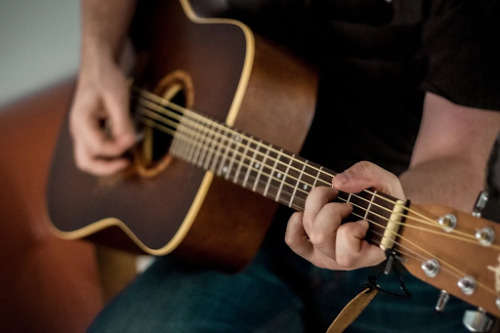
Guitar Ear Training: Several Ways to Train Your Ear
As a guitar player, being able to recognize intervals, chords, and melodies by ear is an essential skill that can improve your overall musicianship. Developing your ear training skills takes time and effort, but it is definitely worth it in the end. This article will help you explore several ways to train your ear as a guitar player, from interval training to listening to music and imitation.
Interval training
Interval ear training is a fundamental exercise that all guitarists should practise regularly. Put simply, an interval is a distance between two notes. It is important to note that there are different types of intervals, such as major, minor, perfect, augmented, and diminished. To train your ear for intervals, you can start by practising ascending and descending scales. When you do this, pay close attention to the intervals between each note.
For example, if you are playing a C major scale, you can play the first two notes (C and D) and try to recognize the interval (a major second). Then, you can play the second and third notes (D and E) and try to recognize the interval (a major second again), and so on.
Another way to practise interval ear training is by playing two notes at the same time (a harmonic interval) or one after the other (a melodic interval) and trying to recognize the interval. For example, you can play a C and an E together (a major third) or a C and a G together (a perfect fifth).
Chord recognition
Chord recognition is another essential ear-training skill for guitar players. A chord is a group of two or more notes played together. There are also different types of chords, such as major, minor, dominant, and diminished.
To train your ear for chord recognition, you can start by practising chord progressions. Ensure to pay close attention to the sound of each chord during this exercise. For example, you can practise the I-IV-V progression in the key of C (C-F-G) and try to recognize each chord as you play it.
Another way to practise chord recognition is by listening to songs and trying to identify the chords used in the song. You can also use websites or apps to help you with chord recognition, such as https://www.useyourear.com/.
Ear-to-hand coordination
Ear-to-hand coordination is the ability to play what you hear in your head on the guitar. Here are a couple of ways you can start developing this skill:
- Play simple melodies by ear, such as nursery rhymes or familiar tunes.
- Transcribe solos or licks from your favourite guitar players.
- Practise playing along with recordings to develop your ability to play in time with other musicians.
One of the best ways to practise ear-to-hand coordination is by transcribing songs by ear. Transcribing is the process of listening to a song and figuring out the notes and chords by ear. This exercise can be challenging at first. However, it can help you develop your guitar ear training skills and improve your overall musicianship.
Listening to music and imitation
Listening to music is a simple yet effective way to train your ear. By listening to different genres of music, you can expose yourself to different rhythms, melodies, and harmonies. This can greatly help in developing your sense of musicality. You can also try to imitate the sounds you hear on the guitar, whether it’s a melody, a chord progression, or a solo.
Another way to practise listening and imitation is by playing along with songs. This exercise can help you develop your timing and phrasing. It can also help with your ability to recognize chords and melodies by ear. You can use software or apps to help you slow down or speed up the tempo of the song. This can help you recognize the chords more easily.
In conclusion
Guitar ear training is an essential skill for any guitar player who wants to improve their musicianship and become a better musician overall. By developing your ear training skills, you can recognize intervals, chords, and melodies by ear. This can help you translate what you hear into physical movements on the guitar.
Practising ear training regularly can help you improve your improvisation skills, play with more confidence, and develop your own musical style. So, whether you’re a beginner or an experienced guitar player, make sure to include ear training in your practice routine.
What are your favourite ear training exercises for guitar players?
© 2023, Seth “Digital Crates” Barmash. All rights reserved.


